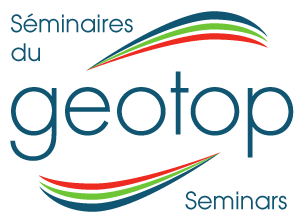Dr John Jamieson - Black smokers and the formation of seafloor massive sulfide deposits
Mardi 8 décembre 2020 à 12h30 - Tuesday, December 8, 2020 at 12:30pm
Pour assister en vidéoconférence via Zoom: https://uqam.zoom.us/j/98489691028
Résumé / abstract:
Since the initial discovery of black smokers on the East Pacific Rise in 1979 a significant amount of research and exploration efforts has focused on finding and studying active seafloor hydrothermal systems along submarine tectonic boundaries. The evolution of exploration methodologies and development of new marine survey technology has advanced to the point where the discovery of new vent fields is becoming routine. This increasing rate of discovery coincides with increasing interest to mine the metal-rich seafloor massive sulfide (SMS) deposits that can form at hydrothermal vents. To properly evaluate the resource potential and environmental consequences of mining SMS deposits, it is important to recognize that not all seafloor hydrothermal systems are necessarily ore forming systems that are metal-rich and have generated, or are generating, SMS deposits of large-enough size to be economically-viable targets for mining. Despite significant promotion and debate surrounding seafloor mining, exploration and sampling efforts indicate that very few of the ~400 seafloor massive sulfide deposits discovered to date are economically feasible targets. In most cases, there simply is not enough information at the deposit scale for a proper evaluation of either grade or tonnage. Where grades and tonnages for SMS deposits have been reported, they are often based on assumptions regarding the composition of the subseafloor material that makes up the bulk of these deposits. In this talk I will present examples of the striking variability in composition of hydrothermal deposits along the Mid-Atlantic Ridge and discuss why not all deposits that accumulate at high-temperature hydrothermal vent fields are necessarily ore-forming seafloor massive sulfide deposits.

Black smokers and the formation of seafloor massive sulfide deposits
Ajouter au calendrier
2020-12-08 12:30:00
2025-07-04 03:18:00
Dr John Jamieson - Black smokers and the formation of seafloor massive sulfide deposits
Since the initial discovery of black smokers on the East Pacific Rise in 1979 a significant amount of research and exploration efforts has focused on finding and studying active seafloor hydrothermal systems along submarine tectonic boundaries. The evolution of exploration methodologies and development of new marine survey technology has advanced to the point where the discovery of new vent fields is becoming routine. This increasing rate of discovery coincides with increasing interest to mine the metal-rich seafloor massive sulfide (SMS) deposits that can form at hydrothermal vents. To properly evaluate the resource potential and environmental consequences of mining SMS deposits, it is important to recognize that not all seafloor hydrothermal systems are necessarily ore forming systems that are metal-rich and have generated, or are generating, SMS deposits of large-enough size to be economically-viable targets for mining. Despite significant promotion and debate surrounding seafloor mining, exploration and sampling efforts indicate that very few of the ~400 seafloor massive sulfide deposits discovered to date are economically feasible targets. In most cases, there simply is not enough information at the deposit scale for a proper evaluation of either grade or tonnage. Where grades and tonnages for SMS deposits have been reported, they are often based on assumptions regarding the composition of the subseafloor material that makes up the bulk of these deposits. In this talk I will present examples of the striking variability in composition of hydrothermal deposits along the Mid-Atlantic Ridge and discuss why not all deposits that accumulate at high-temperature hydrothermal vent fields are necessarily ore-forming seafloor massive sulfide deposits.
Geotop
admin@example.com
America/New_York
public



